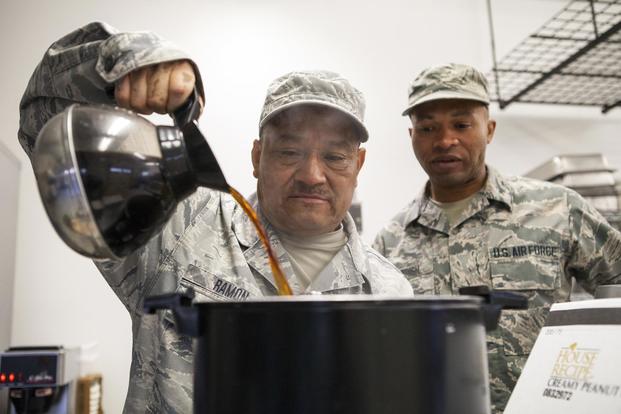The Air Force isn't going to put in an order for more thousand-dollar coffee cups anytime soon.
Air Mobility Command officials on Wednesday said that leaders have instructed units they've entered a "do not order until further notice" on hot cups that can reheat beverages on refueling tankers and cargo aircraft.
"The Air Force suspended buying the cups to address the cost and deliver potential alternative solutions, such as using 3D printing and capability in house, to best use of taxpayer dollars," said AMC spokesman Col. Chris Karns.
Now, any units "attempting to requisition the hot cup through the Air Force Supply System will be advised 'Do Not Order Until Further Notice,'" Karns said in an email Wednesday. Air Force Times was first to report the stoppage.
The announcement follows a minor uproar over the cost of the cups, which caught the attention of a lawmaker known for campaigns against government waste.
Related content:
- Senator Won't Back Down on Air Force's Pricey Coffee Cups
- Lawmaker Chides Air Force for Buying Expensive Coffee Cups
- Air Force's $1,200 Coffee Cups Could Last Longer Thanks to 3D Printing
In July, the Air Force said that the 60th Aerial Port Squadron at Travis Air Force Base, California, purchased 10 hot cups for $6,930 in 2016. The price for each cup surged from $693 to $1,280 in 2018, resulting in a cost of $32,000 for 25 cups -- a price jump of $587 per cup.
The Air Force said $326,785 has been spent for the purchase of nearly 400 of these hot cups since 2016, which brings the average unit cost across the purchase period to roughly $800 per cup.
The purpose of the service's announcement was to tout how it had begun saving on cup costs by using 3D printing to replace flimsy handles that frequently broke when dropped, but Sen. Chuck Grassley was decidedly not impressed.
In a letter addressed to Air Force Secretary Heather Wilson earlier this month, the Iowa Republican questioned why the service spent tens of thousands of dollars over the last three years on cups in the first place.
Wilson said the cups, made to heat water for tea or coffee, are used across 59 KC-10 Extenders, 52 C-5 Galaxies, and 222 C-17 Globemaster III aircraft.
The airlift and refueling planes are used by aircrew for hours-long missions, transporting troops, supplies, equipment as well as aerial refueling to U.S. and coalition forces around the globe. So it's unsurprising pilots and crew operating these fleets may have a backup way to keep caffeinated.
Additionally, the cups need to be FAA-certified because they connect to the aircraft to heat the water, Wilson said.
But when Wilson responded with a breakdown of the costs, Grassley was still unsatisfied.
"It remains unclear why it cannot find a cheaper alternative to a $1,280 cup," Grassley said in his Oct. 19 rebuttal. "Government officials have the responsibility to use taxpayer dollars efficiently. Too often, that's not the case. I intend to pursue this issue further."
The Air Force continues to emphasize the savings the service realized on the pricey cups through 3D printing.
Karns stressed Wednesday that it was airmen who identified the handle breakability issue, "delivered an alternate solution, brought it to light and were already in the process of bringing about change."
"The Air Force Life Cycle Management at Wright-Patterson Air Force Base, Ohio, has both the printer and the materials that can manufacture airworthy parts," Karns said.
The new handles cost of about fifty cents each, Wilson said in her letter.
"Travis is currently awaiting delivery of the certified 3D printer. The new handle design is more ergonomic [and] includes a fully curved handle and, since 3D printing allows the user to print in stacked layers, it is also stronger than other designs," Karns said.
He continued, "Work is already underway to refine processes for identifying and reporting unreasonable costs. Additionally, squadrons are employing airmen ingenuity and looking to develop new solutions for less expensive repairs and replacements."
-- Oriana Pawlyk can be reached at oriana.pawlyk@military.com. Follow her on Twitter at @oriana0214.










